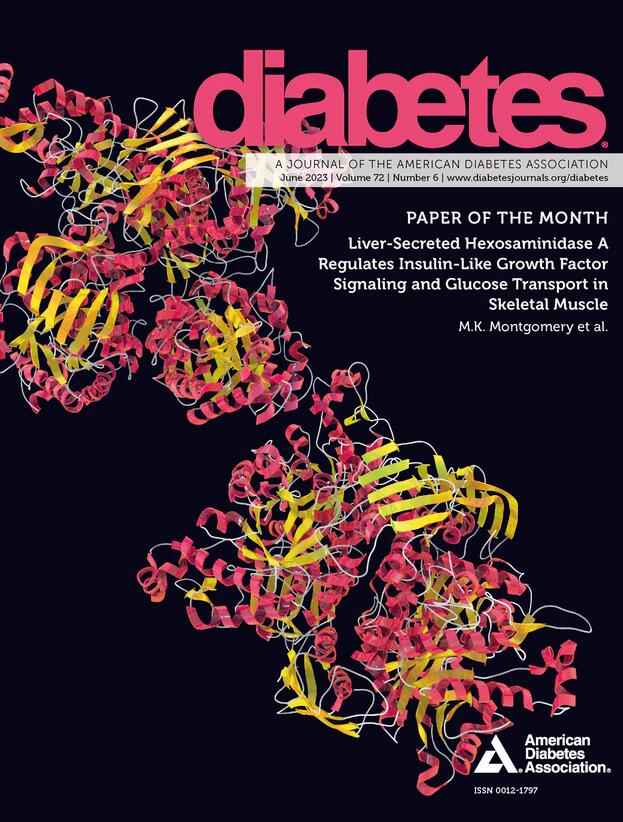带血小板屏蔽系统的胰岛脾内移植可恢复血糖控制
IF 6.2
1区 医学
Q1 ENDOCRINOLOGY & METABOLISM
引用次数: 0
摘要
门静脉内胰岛移植治疗胰岛素依赖型糖尿病已被临床证实。然而,肝脏的缺氧环境和窦状结构不适合移植胰岛的长期生存,导致1年内治疗效果丧失。脾脏的氧水平可以满足胰岛的需要,但强烈的即时血液介导的炎症反应(ibmir)和低细胞外基质(ECM)浓度阻碍了胰岛的植入和存活。在这项研究中,我们构建了被肝细胞和成纤维细胞包裹的胰岛。肝细胞和成纤维细胞形成一层保护膜,由于肝细胞中血管性血液病因子的低表达,该保护膜降低了ibmir,并通过成纤维细胞产生ECM来支持正常的胰岛存活。这些结构体可以很容易地注射到小鼠脾脏中。肝细胞-成纤维细胞包封可显著降低移植后应激期胰岛的死亡率,使其能够快速植入脾脏并形成血管。脾脏的高氧环境支持胰岛长期(1年)生存和持续的血糖调节。此外,该方法显著降低了移植所需的胰岛临界剂量。本研究开发的活细胞屏蔽策略代表了胰岛移植和功能再生的新方法,显示出良好的临床潜力。即时血液介导的炎症反应(ibmir)和低细胞外基质(ECM)浓度阻碍胰岛在脾脏的植入和存活。胰岛被肝细胞和成纤维细胞包裹。肝细胞中血管性血友病因子的低表达使其能够与成纤维细胞形成一层保护膜。这种涂层减少了ibmir,并通过成纤维细胞产生ECM来支持胰岛存活。肝细胞-成纤维细胞包封可显著降低移植后应激期胰岛的死亡率,使其能够快速植入脾脏并形成血管。本文章由计算机程序翻译,如有差异,请以英文原文为准。
Intrasplenic Transplantation of Islets With a Platelet-Shielding System Restores Glycemic Control
Intraportal islet transplantation to treat insulin-dependent diabetes has been clinically validated. However, the hypoxic environment and sinusoidal architecture of the liver are unsuitable for the long-term survival of transplanted islets, leading to the loss of therapeutic effects within 1 year. The spleen has oxygen levels that meet islet needs, but intense instant blood-mediated inflammatory reactions (IBMIRs) and low extracellular matrix (ECM) concentrations hinder islet engraftment and survival. In this study, we developed constructs of islets encapsulated by hepatocytes and fibroblasts. The hepatocytes and fibroblasts create a protective coating that reduces IBMIRs because of the low expression of von Willebrand factor in hepatocytes and supports normal islet survival through ECM production by fibroblasts. These constructs can be easily injected into the mouse spleen. The hepatocyte–fibroblast encapsulation significantly reduces islet mortality during the posttransplantation stress period, enabling rapid engraftment and vascularization in the spleen. The high-oxygen environment of the spleen then supports long-term (>1 year) islet survival and sustained glycemic regulation. Additionally, this method significantly lowers the critical islet dose required for transplantation. The live cell–shielding strategy developed in this study represents a novel approach in islet transplantation and functional regeneration, demonstrating promising clinical potential. ARTICLE HIGHLIGHTS Instant blood-mediated inflammatory reactions (IBMIRs) and low extracellular matrix (ECM) concentrations hinder islet implantation and survival in the spleen. Islets were encapsulated in hepatocytes and fibroblasts. The low expression of von Willebrand factor in hepatocytes enables them to form a protective coating with fibroblasts. This coating reduces IBMIRs and supports islet survival through ECM production by fibroblasts. The hepatocyte–fibroblast encapsulation significantly reduces islet mortality during the posttransplantation stress period, enabling rapid engraftment and vascularization in the spleen.
求助全文
通过发布文献求助,成功后即可免费获取论文全文。
去求助
来源期刊

Diabetes
医学-内分泌学与代谢
CiteScore
12.50
自引率
2.60%
发文量
1968
审稿时长
1 months
期刊介绍:
Diabetes is a scientific journal that publishes original research exploring the physiological and pathophysiological aspects of diabetes mellitus. We encourage submissions of manuscripts pertaining to laboratory, animal, or human research, covering a wide range of topics. Our primary focus is on investigative reports investigating various aspects such as the development and progression of diabetes, along with its associated complications. We also welcome studies delving into normal and pathological pancreatic islet function and intermediary metabolism, as well as exploring the mechanisms of drug and hormone action from a pharmacological perspective. Additionally, we encourage submissions that delve into the biochemical and molecular aspects of both normal and abnormal biological processes.
However, it is important to note that we do not publish studies relating to diabetes education or the application of accepted therapeutic and diagnostic approaches to patients with diabetes mellitus. Our aim is to provide a platform for research that contributes to advancing our understanding of the underlying mechanisms and processes of diabetes.
 求助内容:
求助内容: 应助结果提醒方式:
应助结果提醒方式:


